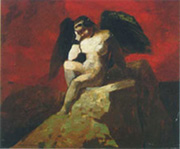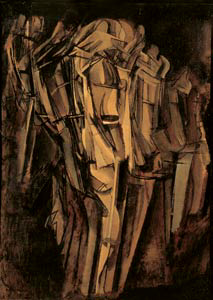|
Once More to
this Staircase: by Bradley Bailey For Dario Gamboni |
|||||||||||||||||||||||||||||||||||||||||||||||||||||||||||||||||||||||||||||||||||||||||||||||
It has been some twenty-five years since Lawrence D. Steefel, Jr.'s analysis of Marcel Duchamp's 1911 drawing Encore à cet Astre (Once More to This Star) (Fig. 1) was published by Art Journal.(1) Despite Steefel's suggestion that Duchamp's minor works, primarily his sketches and drawings, be allotted a greater degree of recognition for what they reveal about Duchamp's creative process as a whole, Encore is still generally accorded little significance beyond its being a study for the Nude Descending a Staircase, No. 2 (Fig. 2).(2) I felt compelled to write about this particular drawing because I strongly agree that Encore has-and continues to be-relegated to a minor status as little more than a precedent for the Nude…No. 2. While Encore is indeed a small sketch, it would be, in this case, presumptuous to judge significance merely according to appearances. It is crucial to remember that the end of 1911 was a pivotal period in Duchamp's career. In the last two months of 1911, Duchamp produced several of his most well known paintings, including Portrait of Chess Players, Sad Young Man on a Train, and the major study for the Nude… No. 2, Nude Descending a Staircase, No. 1. All of the aforementioned paintings have been in some way related to Encore (some more directly than others), yet these relationships have been far from exhausted. In this article, I intend to more fully situate Encore within this period of Duchamp's life and art by examining Encore in relation to contemporaneous works, as well as introducing heretofore unaddressed precedents and possible inspirations for this drawing. My motivation for writing this essay was not to "explain" this sketch or to unearth its "meaning," for I wouldn't propose to do that with any of Duchamp's works, especially one as enigmatic as Encore. Rather, I would like to suggest a number of possible influences, inspirations, and intentions based on Duchamp's own work of the time and the ideas of more recent scholars. Encore
consists of three main parts.(3)
In the center, a heavily-shaded head(4)
rests on a hand or fist, with only a thin line describing a right a
shoulder and bent right arm. To the left of the head is what appears
to be a female figure from the waist down; above the waist is a sectioned
cylindrical element topped with swirling lines reminiscent of hair.
To the right of the head is what has come to be the most "important"
element, a goateed male figure ascending a staircase.(5)
The figure's head is drastically turned in order to peer at a grid to
the right or behind the figure, which Steefel described as a "barred
window." As I agree with Steefel's interpretation of the "female"
figure as a "sex object,"(6)
I will concentrate primarily on the other two elements of the drawing,
after which I will suggest a reading that integrates all three elements.
Joseph Masheck
noted that there is an uncanny resemblance between the ascending figure
in Encore and the ascending figure in Charles Willson Peale's
hypperrealistic Staircase Group: Raphaelle and Titian Ramsay
(1795) (Fig. 3), which is, like Duchamp's drawing, in the collection
of the Philadelphia Museum of Art.(7)
While Masheck made a case for Duchamp possibly having seen a reproduction
of the Peale painting in Paris (Encore preceded Duchamp's first
visit to the United States by more than three years), an association
between the two images, though enticing, remains dubious.(8)
A more practical-and arguably more similar-precedent for the ascending
figure is found in a painting with which Duchamp was undoubtedly familiar,
the silhouetted figure of Don José Nieto in the background of
Velásquez's Las Meninas (1656) (Figs. 4 and 5).
Though the resemblance between the two figures is far from exact, the
figures' postures, particularly the positioning of the legs, head, and
right arm (if the roughly horizontal line extending from the above the
hip of the ascending figure to the central head's left eye does indeed
describe an arm) are similar enough to merit a comparison. Even the
coffered door to Nieto's left has a gridded appearance akin to the grid
to the right of the figure in Encore, albeit on the opposite
side. In Encore, the artist's perspective is a bit different,
with the stairs in three-quarter view and the head in full profile;
a comparison with Las Meninas shows that the ascending figure
is drawn from virtually the same angle that Velásquez would have
seen Nieto in the mirror (Velásquez would not have seen Nieto
as we do in the painting because the artist is off to the side). Could
this figure that so intrigued Foucault have had a similar affect on
Duchamp?
It is not enough
to simply claim Velásquez as a model for the ascending figure
without an explanation. The figure of Nieto in Las Meninas has
long fascinated scholars because of his transitional status; he inhabits
a space that is both invisible to the viewer yet implied by his presence.
Even more important to Duchamp, I believe, is the ambiguity of his presence,
due to the fact he is neither entering nor exiting the room, but, in
Foucault's words, "coming in and going out at the same time, like
a pendulum caught at the bottom of its swing."(9)
Like Nieto, the figure in Encore is positioned in such a way
that he appears to be traveling upward, yet the severe turn of his head
and downward gaze imply an impeding reversal of motion, or at least
the potential for a reversal of motion, rendering the figure, like the
Sad Young Man on a Train and Nude Descending a Staircase,
simultaneously static and dynamic. But why a staircase, and what is it's relationship to the title? As Sigfried Gideon indicated, the diagonal planes of a staircase leading the eye upward led to the stair becoming "the symbol of movement."(10) The general interpretation that the figure is ascending toward the sun/star of the poem is made less feasible by the figure's backward and downward glance. Moreover, as Jerrold Seigel noted, "the 'to' in Laforgue's title was a preposition of address, not of physical movement."(11) Regardless, those who champion readings of Duchamp's works that embrace his heavily debated involvement with the history and theory of alchemy(12) may support the reading of the figure ascending toward the sun/star, as ladders and staircases (which have a closely-tied history and symbolism) are legion in alchemical images and texts. Images of ladders and staircases leading to a star, the sun, or a heavenly/celestial realm (Figs. 6 and 7) support the notion that "the vertical…has always been considered the sacred dimension of space."(13) That the direction of the figure's movement remains ambiguous does not necessarily contradict the alchemical interpretation, as the hermetic theologian and Neoplatonist Cardinal Nikolaus of Cusa (known as Cusanus) indicated, "Ascending and descending…are one and the same. The 'art of conjecture' lies in connecting the two with a keen intelligence."(14) Another possibility of interpretation takes into account Duchamp's predilection for wordplay, being that "astre" is an anagram for "stare" (which the figure on the right certainly does), which is a homonym for "stair."
But
at or through what is the figure staring? The density of the vertical
lines and the converging horizontal lines are certainly meant to convey
deep foreshortening (fig. 8), so one may deduce that the incomplete,
hastily drawn grid contains squares and not
rectangles. The grid can represent innumerable possibilities: Dürer's
device for drawing perspective (Fig. 9), the checkered mosaic
tiles of the Temple of Solomon, generally found in Masonic lodges, and
the magic square, to name a few. A possibility that I would like to
pursue, however, is that the grid represents a chessboard, due to the
fact that the grid contains eight squares at its widest point, the same
number of squares on a chessboard. The fact that the grid is vertical
rather than horizontal should come as no surprise, since chessboards
have been displayed vertically in order to study problems since the
Middle Ages (Figs. 10 and 11). Duchamp himself had numerous chessboards
displayed vertically in his studio, as recorded in several photographs
(Figs. 12 and 13). Moreover, several of his studies for Portrait
of Chess Players show the chessboard not only horizontally, but
scattered throughout the composition, in some cases above and behind
the heads of the players (Figs. 14 and 15). If the figure on
the right is examining a chessboard, it may lead to an understanding
of the role of the central "head." click
on images to enlarge
The position of the central head, with the head resting on the hand or fist, is a posture inextricably linked with chess players, as it is seen in myriad representations of the subject (Figs. 16 and 17). Duchamp used this iconic posture for the figure of Jacques Villon in nearly all the studies for Portrait of Chess Players and in the final oil painting (Fig. 18). Duchamp himself appears in this manner on several occasions, as seen in a photograph used for a window display devoted to Duchamp at the bookshop La Hune in Paris in 1946 (Fig. 19), and in the sculpture Marcel Duchamp Cast Alive (1967) (Fig. 20), executed by Alfred Wolkenberg, which bears an eerie resemblance to the head in Encore. There are certainly practical explanations for the intimate communion shared by the game and this posture; chess games can go on for extended periods of time, during which the neck grows tired and requires additional support. However, in several instances, the hand at the chin appears to support the figure mentally rather than physically. click
on images to enlarge
No doubt the most famous, reproduced, and parodied image of thought of the twentieth-century is Rodin's Thinker (Fig. 21), who, rapt in his all-consuming contemplation, is the icon for the workings of the human mind. Centuries earlier, Michelangelo's depiction of Lorenzo de' Medici at the latter's tomb in Florence (Fig. 22), which has often been cited as a model for Rodin's allegory, was dubbed "Il Penseroso" due to the contrast of his downcast eyes and inward expression with the more active, outward thrust of the sculpture of his brother Giuliano. The fact that both chess players and "thinkers" share the same conventions for representation is far from coincidental, as chess is considered among the most difficult and intellectual of pursuits. Duchamp often stated that art should be more like chess, which is "completely in one's gray matter,"(15) or, in Hubert Damisch's words, "cosa mentale."(16) His desire for art to become "an intellectual expression" was ultimately realized with the Readymades and The Large Glass,(17) but signs of this desire are visible as early as his studies for the Portrait of Chess Players. There is, however, another association to be made with the posture of the central head, one which may be linked to another important painting by Duchamp produced at or near the same time as Encore. For centuries, the propped-up head had an association with another type of thinker, the melancholic. Melancholy, an affliction thought by medieval scientists to have been brought on by an imbalance of bodily humors and the positions of the planets, was exalted during the Renaissance by humanists as a sign of genius.(18)
These humanists championed Saturn, who "was discovered in a new and personal sense by the intellectual elite, who were indeed beginning to consider their melancholy a jealously guarded privilege, as they became aware both of the sublimity of Saturn's intellectual gifts and the dangers of his ambivalence."(19) Among the more famous portrayals of the saturnine artist is Raphael's depiction of Michelangelo (Fig. 23), a self-proclaimed melancholic, in his School of Athens (1510-11).(20) Certainly the most famous image of melancholy (and one of the most analyzed images in the history of art) is Dürer's engraving Melancolia I (Fig. 24), interpreted by Panofsky as a "spiritual self-portrait,"(21) through which Dürer represented "the melancholic artist, both cursed and blessed with a wider range of knowledge and a glimpse into the realm of metaphysical insight, is painfully aware of the discrepancy between the necessary physical concerns of art and the higher metaphysical understanding that is desired."(22) Melancolia I has already been linked with Duchamp's work by Maurizio Calvesi, who indicated that both artists had a shared interest in alchemical imagery.(23) A close comparison of the melancholic angel in Dürer's engraving and the central head in Encore reveals that the two figures share two conventions that Klibansky, Saxl, and Panofsky call "the clenched fist and the black face,"(24) meaning that both heads are propped up by a fist and the faces are heavily shaded. These conventions, which were originally physiognomic symptoms of an affliction, were appropriated by humanists to signify a mental rather than a physical condition.(25) In addition to Dürer's famous engraving, Duchamp could have seen these conventions used by another artist for whom his admiration is well documented, Odilon Redon,(26) whose Penseroso (1874) (Fig. 25) and Angel in Chains (1875) (Fig. 26) owe a debt to Michelangelo and Dürer, respectively.(27)
If the central head of Encore does indeed reflect the conventions of the melancholic artist, does this possibility have any bearing on the title of the Sad Young Man on a Train (Fig. 27), painted shortly after Encore was produced? While Duchamp insisted that the young man's "sadness" was introduced merely for the purposes of alliteration ("triste" and "train"), Seigel pointed out that the painting's original title, "Pauvre Jeune Homme M.," maintained the same mood minus the alliteration.(28) Moreover, the original title was, like Encore, taken from Jules Laforgue, leading to the possibility that Encore may in some way be a study for the Sad Young Man. Steefel's descriptions of Duchamp in late 1911 as "fiercely intellectual," "private and eccentric under a cloak of pervasive 'Hamletism' and desultory ennui," and subject to "an inhibiting malaise of spirit"(29) support the notion that the "sad young man," which Duchamp clearly indicated is a self-portrait, may in fact be a self-representation as the melancholic artist. As I stated at the beginning of this essay, I find Steefel's reading of the "female" figure at the left as a "sex object" very persuasive, and her mechanomorphic sexuality is most likely an anticipation of Duchamp's other paintings involving "the erratic mechanism of human desire."(30) One of a number of his tripartite compositions,(31) one is tempted to try to understand Encore as a single idea, an integrated image in which the three elements have some common denominator. Encore seems to be the very definition of Foucault's concept of the heteroclite, of things "'laid', 'placed', 'arranged' in sites so very different from one another that it is impossible to find a place of residence for them, to define a common locus beneath them all."(32) As it seems highly unlikely that the three elements were conceived and intended to be seen independently, an integrated reading appears to be in order. From the various analyses of the elements of Encore I have endeavored to support, a pattern may be inferred: the staircase, a symbol most commonly associated with spiritual concerns; the chess player or melancholic, both of which are linked to the intellect; and the mechanical/female "sex object," or, like the later coffee and chocolate grinders, a "sex machine." Taken together, the spirit, the intellect, and the carnal are all forms of desire-the desire for salvation, the desire for the acquisition of knowledge or creative growth, and lust. Desire, specifically unfulfilled desire, became one of the critical operators in Duchamp's work, from his distanced disrobing of Dulcinea to the perpetually unconsummated desires of the bride and bachelors.(33) For indeed, by assiduously attempting to locate any logical continuity to conjoin the three figures in Encore, we find ourselves more intimately acquainted with the notion of frustrated desire.
Notes
|
|||||||||||||||||||||||||||||||||||||||||||||||||||||||||||||||||||||||||||||||||||||||||||||||


.jpg)
.jpg)

.jpg)
.jpg)
.jpg)
.jpg)
.jpg)
.jpg)




.jpg)
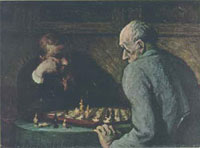
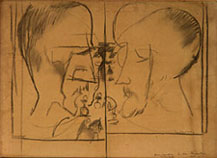
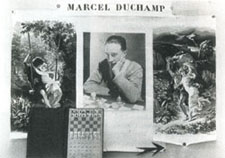
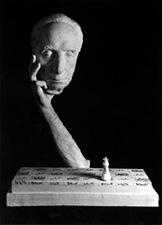
.jpg)
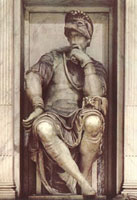
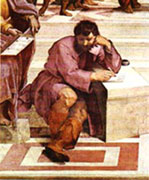
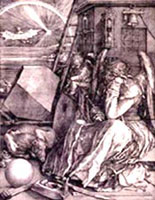
.jpg)
